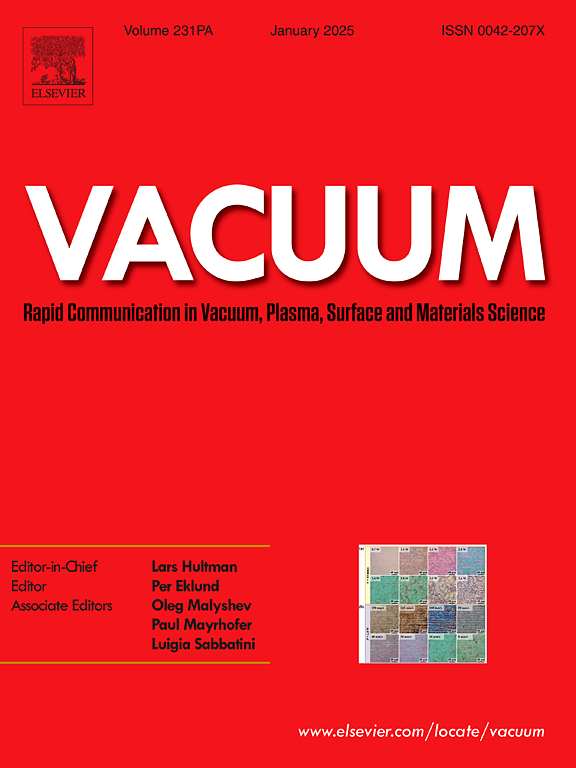Thermal diffusion-driven formation of CuSbS2 from Co-evaporated Cu and Sb2S3 for photovoltaics
IF 3.9
2区 材料科学
Q2 MATERIALS SCIENCE, MULTIDISCIPLINARY
引用次数: 0
Abstract
CuSbS2 is an emerging, earth-abundant material with strong potential as a solar cell absorber. In this work, CuSbS2 thin films are prepared by diffusing copper into antimony trisulphide (Sb2S3) through co-evaporation under low-pressure conditions, and their application in solar cells is demonstrated. The as-deposited samples are amorphous in nature, and their crystallinity improved with thermal treatment at various temperatures, reaching a maximum at 375 °C. The sample composition is varied to determine the optimal stoichiometry achievable with the current deposition method. All the samples exhibited sulfur-poor stoichiometry, and selenium doping is employed to compensate for the sulfur deficiency in the material. The conductivity of the CuSbS2 film improved upon doping with a small amount of Se. Solar cell is fabricated in the configuration Au/p-CuSbS2/n-Si/Al using both doped and undoped CuSbS2. The conversion efficiency improved from 0.15 to 0.7 % with Se doping.
热扩散驱动下Cu和Sb2S3共蒸发形成CuSbS2的研究
CuSbS2是一种新兴的、储量丰富的材料,作为太阳能电池吸收剂具有很强的潜力。本文在低压条件下,通过共蒸发将铜扩散到三硫化锑(Sb2S3)中,制备了CuSbS2薄膜,并展示了其在太阳能电池中的应用。沉积样品本质上是无定形的,在不同温度下进行热处理,其结晶度得到改善,在375℃时达到最大值。改变样品组成以确定当前沉积方法可实现的最佳化学计量。所有样品都表现出贫硫化学计量,并采用硒掺杂来补偿材料中的缺硫。在CuSbS2薄膜中掺入少量硒后,其导电性得到改善。采用掺杂和未掺杂CuSbS2制备了Au/p-CuSbS2/n-Si/Al结构的太阳能电池。硒的掺入使转换效率从0.15提高到0.7%。
本文章由计算机程序翻译,如有差异,请以英文原文为准。
求助全文
约1分钟内获得全文
求助全文
来源期刊

Vacuum
工程技术-材料科学:综合
CiteScore
6.80
自引率
17.50%
发文量
0
审稿时长
34 days
期刊介绍:
Vacuum is an international rapid publications journal with a focus on short communication. All papers are peer-reviewed, with the review process for short communication geared towards very fast turnaround times. The journal also published full research papers, thematic issues and selected papers from leading conferences.
A report in Vacuum should represent a major advance in an area that involves a controlled environment at pressures of one atmosphere or below.
The scope of the journal includes:
1. Vacuum; original developments in vacuum pumping and instrumentation, vacuum measurement, vacuum gas dynamics, gas-surface interactions, surface treatment for UHV applications and low outgassing, vacuum melting, sintering, and vacuum metrology. Technology and solutions for large-scale facilities (e.g., particle accelerators and fusion devices). New instrumentation ( e.g., detectors and electron microscopes).
2. Plasma science; advances in PVD, CVD, plasma-assisted CVD, ion sources, deposition processes and analysis.
3. Surface science; surface engineering, surface chemistry, surface analysis, crystal growth, ion-surface interactions and etching, nanometer-scale processing, surface modification.
4. Materials science; novel functional or structural materials. Metals, ceramics, and polymers. Experiments, simulations, and modelling for understanding structure-property relationships. Thin films and coatings. Nanostructures and ion implantation.
 求助内容:
求助内容: 应助结果提醒方式:
应助结果提醒方式:


